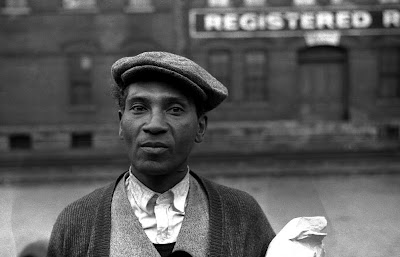 Another image produced for the US government. Its caption reads: "The United States is at war and the law will show no mercy to anyone who sells - or buys - black market food."
Another image produced for the US government. Its caption reads: "The United States is at war and the law will show no mercy to anyone who sells - or buys - black market food."As this series of images from World War II demonstrates, rationing isn't fun. Putting such a system in place consumes enormous amounts of human energy, is difficult for consumers to understand, is unpleasant for sellers as well as buyers, and requires enforcement mechanisms that threaten dire consequences for cheating.
Photo by Alfred T. Palmer, 1943. [American Memory link]
 Am I the only one who's confused - and thanking my lucky stars I was born in a peaceful era in which resources are plentiful? As the caption accompanying this photo explains:
Am I the only one who's confused - and thanking my lucky stars I was born in a peaceful era in which resources are plentiful? As the caption accompanying this photo explains:














































